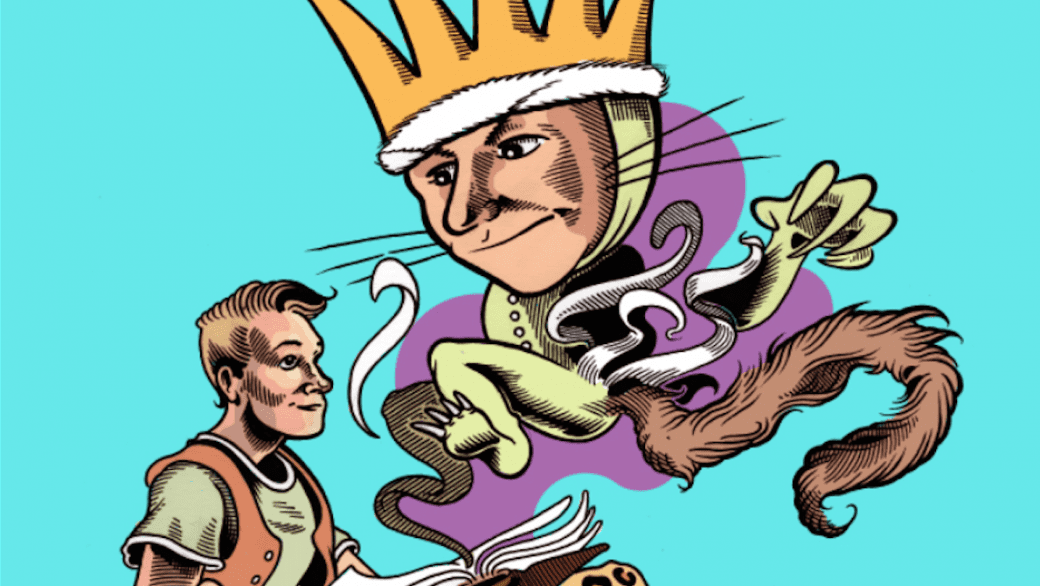I did not grow up with the work of Maurice Sendak.
While I was always peripherally aware of his most famous book — the now-classic children’s story Where The Wild Things Are — I didn’t spend any substantial time with him until just a few years ago, when I came across a two-page comic strip from an early ’90s issue of The New Yorker, drawn collaboratively with Art Spiegelman (the renowned cartoonist behind the Maus graphic novels). The strip showed the two creators strolling leisurely through Sendak’s Connecticut estate, discussing life, their creative processes, and how both of their work reflected a decidedly complex relationship with childhood. This last topic provoked Sendak to remark caustically:
“People say, ‘Oh, Mr. Sendak. I wish I were in touch with my childhood self, like you!’ As if it were all quaint and succulent, like Peter Pan. Childhood is cannibals and psychotics vomiting in your mouth!”

I’ll admit, I was a little disappointed not to find this exact sequence illustrated in any of Sendak’s works. The remark was, however, emblematic of his output. Contrary to most mid to late–century children’s literature, Sendak rarely shied away from depicting characters and motifs that were fearsome, and at times grotesque — goblins stealing children, the island of beastly Wild Things, a gang of seven monsters terrorizing a small village, homeless children rescuing their own from giant rats.
Sendak’s work drew heavily from the unsanitized, pre-Disney tradition of Grimm’s fairy tales, and he married these darker elements with a warm sense of play and sentimentality — all put to the service of exploring his young readership’s wide range of emotions and experiences, which he made a point never to underestimate. In fact, he once famously stated, “You cannot write for children . . . they’re much too complicated. You can only write books that are of interest to them.”
It wasn’t until much later in his life that Sendak came out as gay, and this revelation made me feel a much deeper affinity for his work. Speaking for myself, I’ve never looked back on childhood as a “simpler time” — I was frequently singled out and harassed in school for being different, before I even had the proper knowledge or vocabulary to express it myself. As with many queer youth, I didn’t have the resources to self-actualize until after my teens, resulting in a childhood that felt especially half-formed, and in some ways, perhaps deprived.
I was, however, lucky to find solace in creating my own worlds. In place of sports or music, I spent most of my free time reading comic books and drawing countless of my own (sometimes by the week), which were rooted in fantasy and adventure. Comics have stubbornly carried through to my early adulthood, which has seen me take up cartooning professionally. Since 2012, I’ve created a series of queer memoir comics documenting my own tentative years, and am hard at work on a new book in progress that’s leaning more toward the fantasy and fiction I grew up on.
When I look at the worlds which Sendak conjured up, I can feel the thrill of fantastical escapism, the imminence of fearful uncertainty and the amorphous turbulence of growing pains — sometimes simultaneously. He shared with us an unparalleled exploration of our early emotional landscapes, showing a compassionate solidarity with children who may have had it a bit tougher than others.
In his comic strip with Art Spiegelman, Sendak left us with this closing remark:
“In reality, childhood is deep and rich. It’s vital, mysterious, and profound. I remember my own childhood vivid. I knew terrible things, but I knew I mustn’t let adults know I knew . . . it would scare them.”
I may not have grown up with Sendak’s work, but delving into it now has helped me come to an understanding and reconciliation towards the trials of growing up — something everyone, but especially us queer folks — hold very close to us.
(Maurice Sendak: 50 years, 50 works, 50 reasons
Saturday, Dec 19, 2015–Sunday, Jan 31, 2016
Toronto Reference Gallery, TD Gallery, 789 Yonge St, Toronto
torontopubliclibrary.ca)
(Original illustration by Eric Williams)

 Why you can trust Xtra
Why you can trust Xtra


